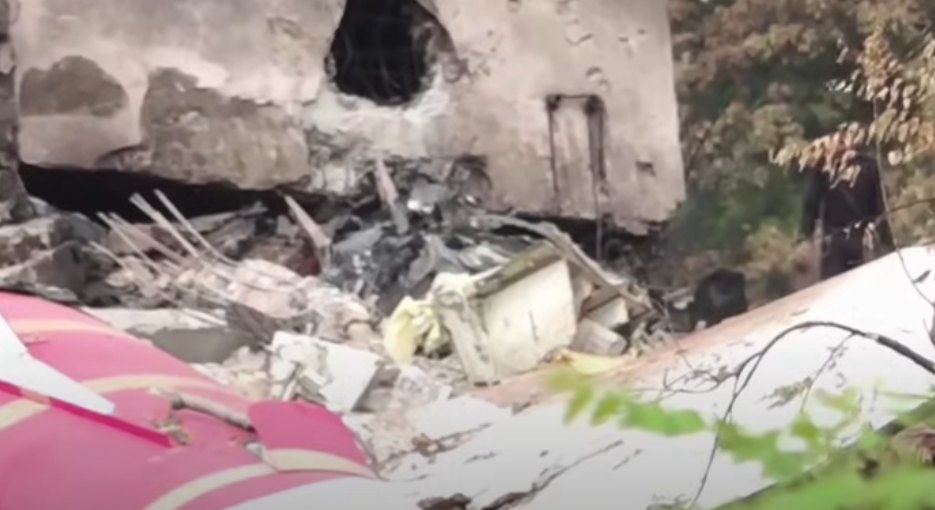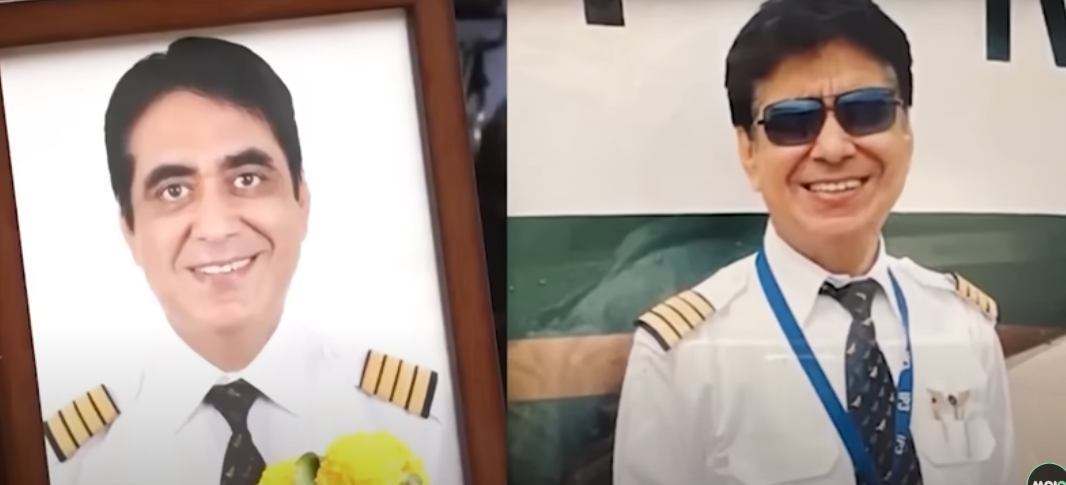A Nation in Shock: More Than Just a Plane Crash:-
Is the pilot being made a scapegoat for the incident in which the plane crashed in the sky of Ahmedabad ? Is the dead pilot being blamed to save Boeing company, Air India and all the organizations that were responsible for monitoring India ? It is being hinted that it was all their fault. Everyone else was clean. 12 June 2025, not only one plane fell in the sky of Ahmedabad . The country’s confidence had also fallen drastically. The confidence in which we think that when we or someone close to us travels, he or she will have a safe journey.
Blaming the Dead: Is the Pilot Being Made a Scapegoat?:-
But now the way the blame has been put on the pilot it seems that the pilot alone is responsible for taking all the lives. The question that arises in the mind is whether Boeing Company Air India is shirking its responsibility. Is this also a cover up like the 737 Max. Where the pilot was made a scapegoat by hiding the shortcomings of the Diz. Because there was earlier warning about the flaw in Boeing’s fuel switch design but it was ignored. Now, is the technical fault being suppressed and a story of pilot error being fabricated and would a pilot with 30 years of experience switch off the switch without any reason or was there some fault in the system which is being hidden ? Why does it happen again and again that when a plane accident occurs, the company does not accept its mistakes? Those who investigate do not consider the companies to be at fault. We are continuing the investigation, calling it the sole error of the pilot. This is announced.
Cockpit Voice Recording Raises More Questions Than Answers:-
But the blame is put on the pilot. The truth never comes out. Do the big rewards and the people responsible keep escaping and every time there is only silence standing on the pile of dead bodies? This question is being raised because the pilot has been accused. And now we are asking whether the truth is being hidden under the guise of conspiracy. On the morning of June 12, Air India Flight AI71 crashes seconds after take off. The plane reached an altitude of only 650 to 825 feet. Both engines suddenly stopped. The pilot gave a mayday call at that time but there was less time. A cockpit recording also surfaced in which the pilot himself was shocked. One asked why the switch was turned off? The question arises whether such an experienced pilot can make such a mistake which can endanger his life? FA reports show that the fuel cut-off switch is not easy to turn off. And this is a deliberate step. This does not happen unknowingly. Both the switches were turned off at an interval of a few seconds and then turned on again. This points to some other technical glitch.
Historical Warnings Ignored: A Known Design Flaw?:-
There have been complaints about the fuel system of Boeing 787 earlier also. In such a situation it is too early to assign blame. And that is why we are asking this question whether it was pilot error or another design failure that is being covered up. In the preliminary report of the investigation of Air India flight AI 171 , the pilots have been directly blamed. The pilot was blamed for the engine fuel supply cutting off 32 seconds later. The investigation report is raising questions on the pilots on this basis. But the question is, is it right to reach any conclusion so quickly ? Because Alpha India, which is an organization of pilots, is calling this investigation one- sided. She is saying that the pilots are being made scapegoats. However, it is also a matter of thought that there were experienced pilots like Captain Sumit Sabhawal who had more than 30 years of experience and First Officer Kunder who had thousands of hours of flying experience. Can they make such basic mistakes ? The question also arises whether the failure of the Emergency Locator Transmitter (ELT) to function was also the pilot’s fault? ELT is actually a technical device which sends signal for help after a plane crash.
The Boeing Pattern: Is History Repeating Itself?:-
If it was not working, was it the pilot’s responsibility or was it the result of some other technical fault or maintenance negligence ? However, there is also a human aspect to this incident. The biggest question is that when both the pilots have lost their lives in this accident then they cannot give their explanation. No voice can be raised in their favour now. In such a situation, the responsibility of the investigating agencies increases even more to work impartially so that the pilots who have lost their lives should not be accused of taking the lives of other people. Every aspect must be investigated before proving any fault. Otherwise, this will not be merely a technical accident but a throttling of justice. And anyway, the Boeing aircraft has a dark history. Boeing is the world’s largest aircraft manufacturing company. At one time he alone had the upper hand. But its history is full of many major accidents and controversies. It has often been observed that whenever an accident occurs , Boeing avoids or delays a direct response to it. You look at the two major accidents of Boeing 73 Max model in 2018 and 19. One happened on an Indonesian Land Air flight and the other on an Ethiopian Airlines flight. 346 people died in these two incidents. It was later discovered that there was a fault in the aircraft’s software and the pilots were not informed about it. Despite this, Boeing initially did not accept its mistake.
Where is Boeing’s Accountability?:-
In 204, the Boeing 737800 accident occurred in South Korea, killing 180 people. Even in 2025, 50 people were injured due to technical fault in the cockpit seat. These accidents show that technical problems are continuing. If we look at history, around 6000 accidents have happened involving planes manufactured by Boeing. Of which 415 are very serious and more than 9000 people have lost their lives in these accidents. Despite this, little action has been taken against Boeing as the company’s political and economic influence has grown. In countries like America, Boeing has deep connections with the government, which sometimes leads to security agencies showing leniency. If we look at the recent example of the Ahmedabad accident, Boeing has not given any clear statement till now. Initial investigations did not identify aircraft defects as solely responsible. Whereas the FAA had already given some warnings in 2018, they were ignored. It is clear that Boeing’s history is not just of technological successes, but also of negligence, delayed responses and avoiding accountability after accidents. Unless Boeing adopts greater transparency and responsibility, questions about passenger safety will remain.

ELT Failure: Another Overlooked Technical Glitch:-
Another question is whether blaming the pilot for his death is a cover-up like the 737 Max ? Is history repeating itself? Because even when two 737 Max aircraft were involved in accidents in 2018-19, Boeing had initially raised questions on the pilots. It was said that it was human error due to which the incident happened. But as the investigation progressed, it was found that there were software issues that were hidden and Boeing neither informed the pilots about it nor made any correction. The company maintained silence. By the time the truth came out, 346 people had died. Now the question is that the same old game is going on in Ahmedabad also. Initial reports into AI171 crash targetted pilots. The engine fuel supply stopped 32 seconds after take off. Based on the conversation recorded in the cockpit, all the blame is on the pilot. But the question remains the same that the warning was old. If that warning had been taken seriously, this tragedy could have been averted. Boeing’s past record also says that whenever an accident happens, the company makes a strategy – put the blame on the pilot, divert attention from the technical fault and keep quiet.
Conclusion: Justice Must Not Crash with the Aircraft:-
Is the same happening this time as well and is this investigation fair because the biggest question on the 15-page initial report of the AI-71 accident is whether the investigation is complete and is this investigation fair. There is hardly any mention of technical faults in the report. Questions related to technical partners like Boeing and General Electric have either been ignored or have been deliberately left out. The entire focus is on the pilot’s error. While many major signs were pointing towards a technical glitch. Now the question is, can the investigation of such a big accident be one-sided ? And will Boeing once again leave without answers? Remember, as long as there is no accountability, accidents will continue to happen. The Ahmedabad accident is not just a technical accident but a big warning. The FAA had already warned about flaws in the fuel system.
If only those warnings had been taken seriously. Maintenance could have been better. If the design flaws were corrected, about 290 people would have been alive today. Now what is needed is a fair, transparent and most importantly honest investigation so that not only the culprits can be held accountable but such accidents can be prevented in future. Otherwise, the next tragedy may just be waiting in the wings.

